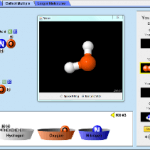LEARNING PHYSICS has been viewed by many as dragging and difficult. A lot would say, “I hate learning physics,” but with physics simulations from PhET, not anymore.
When teaching velocity and acceleration, you can use this fun simulation called the Lunar Lander, where players attempt to make a soft landing on the flat zones of the Moon.
They can alter the lander’s motion by providing an upward thrust produced by the lander’s engine — to counter the acceleration due to gravity — so that the velocity wouldn’t be too large (not more than 2 meters per second).
Here is a video I created to introduce the game:
There are important things to note about the simulation:
- The acceleration due to gravity of the Moon is less than that of the Earth (about 1/6) so the velocity of falling bodies on the Moon would not increase in the same manner as it would on Earth;
- The Moon has no atmosphere so drag (air resistance) wouldn’t be a problem
- You are not supposed to hear any sound once you are on the Moon as sound cannot travel through space; sound requires a medium (air) to travel
- The lunar lander is only in free falling motion once the engine is turned off or the acceleration due to the force exerted by the engine’s exhaust is zero
- Students must turn on the vectors so that they will be able to see how the acceleration and velocity change as they toggle the thrust
Visit the PhET website to access the Lunar Lander Simulation.
If you liked this article, please subscribe to the Teacher’s Notebook.








